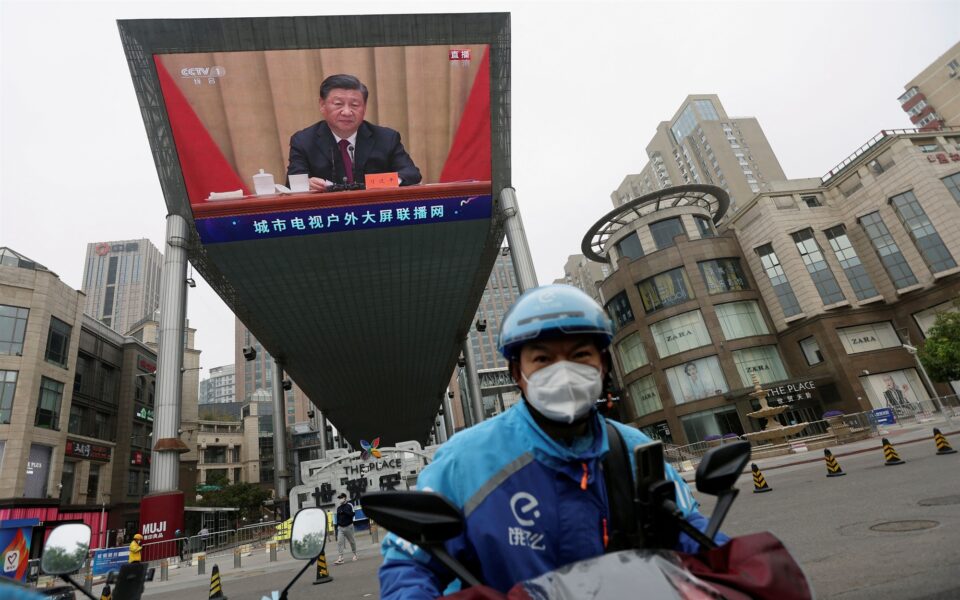What next for China?

Over the next decade, will China become stronger or weaker? Its economic clout, global political influence, and expanding military power make this a critical question in every region of the world. The answer will depend on whether brute economic strength or technological prowess will prove more important for a prosperous and secure future. China’s economic outlook has become increasingly cloudy, but its status as emerging tech superpower might be more important.
China’s rise from poverty to powerhouse has created new opportunities for more people – inside China and around the world – than any economic trend in history. It has created both a Chinese and a global middle class. The foundation for this achievement is built on two advantages. First, decades ago, China could profit from the largest pool of cheap labor in human history. Second, its low wages persuaded manufacturers in wealthy countries to “offshore” their operations to China to lower production costs and increase profits.
Both of those advantages are now gone. Chinese wages rose sharply as workers expanded their skills, and poorer countries can now offer the lower wages that no longer exist in Chinese factories. What’s more, China’s one-child policy limited long-term population growth, reducing the relative supply of labor, adding more upward pressure on wages. The global economy now depends more on trade in services than a generation ago, creating less demand for factory labor, and governments and private companies, particularly in the United States, have faced political pressure to “re-shore” manufacturing jobs that were once moved to China.
For all these reasons, China’s rise may finally have reached a dead end. Economists warn that many emerging countries fall into a “middle-income trap” by losing the advantages that helped them escape poverty without gaining the tools needed to compete with wealthier countries with knowledge-based economies powered by highly trained workforces. That’s a dangerous place to be, particularly for a ruling party that demands credit for the achievements that have created continually rising public expectations while refusing blame when expansion stalls.
Its policymakers are also grappling with an Everest of public debt, particularly in Chinese companies. For years, China’s government has protected its largest companies in many different sectors from default to save large numbers of jobs and safeguard the solvency of the country’s banks. These state interventions have made the problem worse by persuading both borrowers and lenders to expect protection from their own poor decisions. Fixing that problem requires a tolerance for economic pain that’s in short supply at a time when Covid is wreaking havoc on China’s economy, when Russia’s war on Ukraine is raising the prices that China pays for fuel and food – and at a moment when President Xi Jinping is preparing the Communist Party to set aside past practice and grant him a third presidential term with unprecedented power later this year.
And yet… China’s fast-expanding technological prowess will limit the damage created by its economic vulnerabilities. Not so long ago, advances in communications technology empowered the individual at the expense of the state. Expanding global access to the internet allowed users to find information from an unprecedented variety of sources and to communicate with others, across their country and around the world, in real time. But over the past decade, that trend has given way to the “data revolution,” which allows authoritarian governments and the world’s largest tech companies to collect the vast amounts of data we produce in the digital world to learn much more about who we are, what we want, and what we’re doing to get it.
Here, China has large and lasting advantages. Its companies have demonstrated fast-growing sophistication not only in digital commerce but in face and voice recognition, strengths an authoritarian country can develop with far fewer obstacles than in a system that limits the concentration of political power. In addition, the sheer size of China’s population allows for the larger database that enables quicker technological advancement.
But China’s biggest tech advantage lies in the state’s ability to direct tech companies to create products that serve the state’s political needs, the ability of the state to direct mountains of money toward those development projects, to coordinate their work, and to extend China’s international influence by selling surveillance technologies to other countries, both authoritarian states and democracies, that will pay for products that enhance national, or least the ruling elite’s, security.
China’s future will depend on one more important question that’s harder to answer: How will America, Europe and Japan respond to China’s next chapter? For the moment Russia’s invasion of Ukraine has brought the transatlantic partners closer together than at any point since the Cold War’s end, and China’s support for Russia, limited though it remains, has raised well-founded Western doubts about China’s foreign policy intentions.
At the same time, however, it should be clear to policymakers everywhere that China’s importance for a globalized economy means that China’s weakness remains a global vulnerability. Whether Chinese and Western leaders can keep that bottom line in mind as they manage their shifting relations may prove the most important question of them all.
Ian Bremmer is the president of Eurasia Group and GZERO Media and author of “Us vs Them: The Failure of Globalism.”





